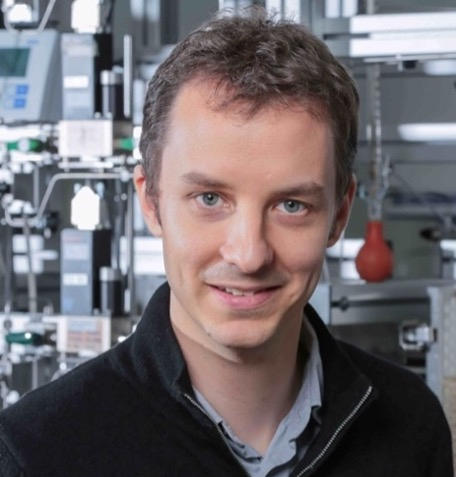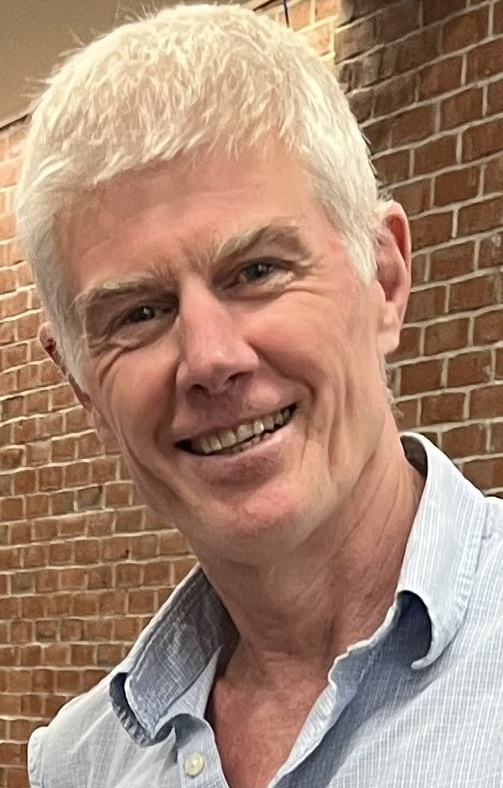When: 22 March 2023, 15:00 – 17:00 GMT
Where: Online
The UK Catalysis Hub are hosting a series of seminars for Early Career Researchers on the use of catalysts (bio, hetero- and homo-geneous) towards sustainable solutions in the carbon economy.
The next virtual seminar for Early Career Researchers will be on lignin related catalysis topics; particularly as a sustainable source of carbon feedstocks. Three talks followed with time for discussion.
Chair:
Bruce Lichtenstein, Portsmouth
Speakers:

Jeremy Luterbacher, Institute of Chemical Sciences and Engineering, École Polytechnique Fédérale de Lausanne (EPFL), Switzerland
Controlling the catalytic upgrading of biomass by engineering both substrate and catalyst
The production of various chemicals from biomass usually involves the depolymerization of biomass’s three constituent polymers: cellulose and hemicellulose, which are both polysaccharides; and lignin, which is a polymer of phenyl propanoid sub-units. These three types of complex molecules are broken down into their constituent monomers, which include sugars and phenyl propane derivatives. In turn, these low-molecular weight monomers can be catalytically upgraded to either direct or indirect substitutes for petrochemicals. In both depolymerization and catalytic upgrading, the biggest challenge is usually not achieving the desired reaction, but rather avoiding being outcompeted by other, detrimental reactions. Depolymerization reactions of the major biomass constituents – polysaccharides and lignin – are often outpaced by subsequent degradation reactions of sugars and lignin intermediates. In parallel, coking reactions and catalyst deactivation processes plague the upgrading of highly oxygenated and water-miscible biomass derivatives.
In this talk, I will present several solutions to these challenges that my laboratory has developed. I will show how we can use functionalization chemistry, both during lignin extraction and polysaccharide depolymerization, to reversibly “trap” stabilized intermediate molecules, and facilitate their high-yield upgrading. Notably, we can show that, under the right conditions, extracted lignin can be catalytically upgraded at high yields to as few as 1-2 major products. I will also discuss how targeted surface modifications on the heterogeneous catalysts associated with these transformations can lead to dramatic changes in stability even in the presence of highly oxygenated renewable streams. Finally, I will discuss how acetal functionalization can be used to create new commodity chemicals, specifically polymers, that by their very design are easy to produce and sustainable.
Biography
Jeremy Luterbacher was born in Switzerland in 1984 and received a B.Sc and M.Sc. in chemical engineering from the École Polytechnique Fédérale in Lausanne (EPFL), Switzerland in 2007. He spent a year as a visiting scientist at the Massachusetts Institute of Technology (MIT) working in Jeff Tester’s lab. Jeremy then moved to Cornell University in Ithaca, New York, to pursue doctoral studies in Prof. Larry Walker’s lab. After receiving his PhD in 2012, Jeremy joined the Great Lakes Bioenergy Research Center at the University of Wisconsin-Madison as a Swiss National Science Foundation Postdoctoral Scholar under the supervision of Prof. Jim Dumesic. In 2014, Jeremy returned to EPFL as a Tenure-Track Assistant Professor and head of the Laboratory of Sustainable and Catalytic Processing. He was promoted to Associate Professor in 2021.
Since arriving at EPFL, Jeremy has been awarded a European Research Council (ERC) starting grant in 2017 and a Swiss National Science Foundation Consolidator Grant in 2023. In 2019, he received the Werner Prize from the Swiss Chemical Society for outstanding independent chemical research in Switzerland. His work on lignin stabilization was recognized by the 2019 EPFL Latsis prize and the 2021 ACS Sustainable Chemistry & Engineering Lectureship. He is also an associate editor at Science Advances.

Lindsay Eltis, University of British Columbia
Rhodococcal cell factories for lignin valorization
Rhodococcus, an actinobacterium, has tremendous potential as a microbial cell factory to valorize lignin in processes involving the sequential chemo- and bio-catalytic conversion of biomass. Rhodococci are used in industrial applications, catabolize a remarkable range of aromatic compounds, including lignin depolymerization products, and possess prodigious biosynthetic capabilities. As part of ongoing efforts to characterize the catabolism of lignin-derived aromatic compounds by Rhodococcus, we used transcriptomics and molecular genetics to elucidate convergent pathways that catabolize 4-propylguaiacol and 4-ethylphenol, two compounds produced by reductive catalytic fractionation of corn stover. 4-Propylguaiacol catabolism is initiated by a cytochrome P450 and proceeds via a meta-cleavage pathway. This catabolism enables Rhodococcus to grow on corn stover lignin produced by reductive catalytic fractionation. More recently, we have described the hydroxyphenylethanone (Hpe) pathway that enables Rhodococcus to grow on acetovanillone as well as softwood lignin pretreated by oxidative catalytic fractionation. This pathway involves a novelcarboxylase before conversion to vanillate and degradation via an ortho-cleavage pathway. Interestingly, Rhodococcussimultaneously catabolized mixtures of substrates through meta– and ortho-cleavage pathways, respectively, without producing dead-end metabolites. Finally, to accelerate the engineering of rhodococcal biocatalysts, we created a suite of integrative genetic tools that allow for industrially-focused strain engineering and the in situ characterization of genetic parts. We first created pRIME, a modular, copy-controlled integrative-vector. We then used this vector to benchmark constitutive promoters and, as a proof-of-principle, to improve vanillin catabolism in a Rhodococcus. Building on pRIME, we developed a series of novel hybrid-promoters and integrative vectors that allow for tetracycline-inducible gene expression in Rhodococcus, as well as a uLoop-derived Golden Gate assembly strategy for high-throughput DNA assembly in Rhodococcus. Finally, we have used these tools to engineer strains to tolerate high concentrations of aromatic aldehydes. Overall, our studies provide insights into the physiology of a biotechnologically important bacterium and facilitate the development of biocatalysts to sustainably transform lignocellulose.
Biography:
Lindsay Eltis is a Professor of Microbiology and Immunology at UBC and the Canada Research Chair in Microbial Catabolism and Biocatalysis. His primary interest is bacterial enzymes and pathways responsible for the catabolism of aromatic compounds and steroids. He has used a wide variety of approaches to gain pioneering insights into the molecular basis of these catabolic processes, making seminal contributions to our understanding of the functions and catalytic mechanisms of key microbial enzymes, as well as the organization and regulation of bacterial catabolic pathways. A major outcome of Eltis’s research is microbial cell factories to valorize lignin.

Shannon S. Stahl, University of Wisconsin – Madison
Catalytic aerobic oxidative fractionation of biomass and lignin depolymerization
Catalytic oxidation methods provide a valuable complement to reductive methods for fractionation of biomass and lignin depolymerization. Some of the oxygenated products of these methods have direct market value (vanillin, para-hydroxybenzoic acid), but all represent appealing targets for new market opportunities, for example, as precursor to biobased plastics and plasticizers. This talk will highlight recent advances in the development of catalyst systems and aerobic oxidation methods that afford high yields of oxygenated products. Two different approaches will be presented:
- Oxidative catalytic fractionation, in which raw biomass (e.g., poplar wood chips) is subjected to aerobic oxidation conditions in an organic solvent containing a heterogeneous non-precious-metal “M-N-C” catalyst, composed of Co, Fe, or other metal ions integrated within a nitrogen-doped carbon support. These conditions convert the lignin into a mixture of aromatic monomers in one step from biomass, while also affording high-quality sugars.
- Oxidative alkaline depolymerization of process lignin, in which lignin is dissolved under basic conditions and treated at high temperatures in the presence of oxygen gas and (typically) dissolved metal-ion catalysts. Here, we have developed a continuous-flow process compatible with large scale applications.
Both approaches have been paired with centrifugal partition chromatography to enable separation and purification of the aromatic chemicals derived from these processes. This talk will emphasize the catalytic processes as the strategic basis for production of valuable purified chemicals from lignin.
Biography:
Shannon S. Stahl is the Steenbock Professor of Chemical Sciences at the University of Wisconsin-Madison, where he began his career in 1999. He was an undergraduate at the University of Illinois at Urbana-Champaign (B.S., 1998), a graduate student at Caltech (PhD, 1997; Prof. John Bercaw), and an NSF postdoctoral fellow at the Massachusetts Institute of Technology (1997–1999; Prof. Stephen Lippard). His research group specializes in catalysis, with an emphasis on aerobic and electrochemical redox reactions, with applications to chemical synthesis, biomass valorization, and electrochemical energy generation and storage. He is co-editor of Liquid Phase Aerobic Oxidation Catalysis, a book highlighting existing applications and future opportunities for the use of aerobic oxidation in industrial chemical synthesis, and his industrial collaborations have been recognized by a US EPA Presidential Green Chemistry Challenge Award and the ACS Award in Affordable Green Chemistry.
This event will be recorded and the recording will be publicly available after the event, with verbal or written contributions from participants included in this recording.




